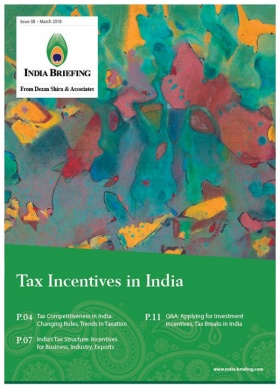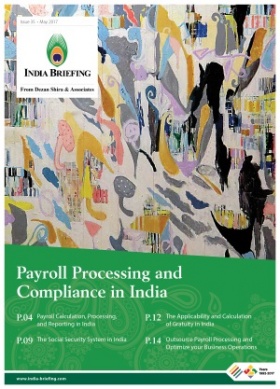Medical Tourism in India: Industry Growing to Meet Demand
India is becoming an increasingly big player in the international medical tourism industry, otherwise known as Medical Value Travel (MVT). By 2020, India’s MVT industry will more than double its current US$3 billion in revenue to US$8 billion, with a compound annual growth rate of 15.6 percent.
Indeed, foreign nationals in need of complicated treatment, surgeries, and operations are increasingly choosing India because of the country’s affordable, high quality medical care. In 2015 alone, 500,000 foreign nationals visited India for medical care.
India’s rapidly growing MVT market offers huge potential for new investments in private medicine as well as value-added travel, which focuses on a patient-oriented business model.
Medical tourism market: Why choose India
India is one of the cheapest destinations in the world for most complicated surgeries and treatments. In India, a heart bypass surgery costs only US$5,200 – compared to US$144,000 in the US, and US$15,121 in Thailand – India’s biggest regional competitor for MVT.
Despite these competitive prices, leading private hospitals in India deliver globally recognized standards of care. A 2013 study published in the Harvard Business Review found that the affordability of Indian healthcare has less to do with salary levels for its staff, and more to do with coordinated medical planning, which maximizes the use of expensive equipment and expertise, increasing productivity and reducing operational costs.
Further, many hospitals that cater to foreign patients in India are staffed by doctors who have studied and practiced in Europe and North America. These hospitals also staff translators and stock international cuisines to make themselves appear more attractive to international patients.
Currently, the majority of India’s medical tourists come from nearby South Asian countries – such as Bangladesh, Afghanistan, and Maldives – as well as African countries like Kenya, Ghana, and Nigeria. However, India is also becoming an increasingly attractive destination for patients from Russia and Central Asia as well.
As India’s reputation as a global medical tourist hotspot grows, patients from Europe and North America are beginning to choose India as their destination for medical care. India’s ability to couple medical treatment with alternative forms of healing – such as yoga, homeopathy, and ayurveda – has helped increase the attractiveness of MVT in the country.
Patient-oriented business model
Medical tourists are often overwhelmed by both India’s bureaucratic procedures necessary in attaining a medical visa (or ‘M-visa’) and the unstructured nature of India’s medical tourism industry. There is great space for facilitating businesses that are competent in navigating the bureaucratic and cultural world of India for foreign patients.
As the name ‘Medical Value Travel’ implies, medical tourism is a value added service that incorporates everything from bureaucratic procedures, to travel, and accommodation. Most patients choose their medical tourist destination based on price, availability of knowledge, proximity, and ease of attaining proper paperwork.
A ‘patient-oriented’ business model puts the needs of the patient first, not just in medical care, but also in everything associated with the process. Pankaj Chandna, a representative of Vaidam Health, a growing player in India’s MVT industry, told India Briefing that businesses that work in MVT need to be facilitators and “representatives” of the patient’s needs and expectations.
Facilitator companies working under a patient-oriented model are well positioned to create value-added services within India’s existing tourism industry. India’s tourism industry already accounts for over 6 percent of the country’s GDP; MVT offers value added services for an already enormous market.
Investment needed to realize market potential
India’s leading private medical institutions are efficient and affordable while maintaining a high standard of care. International patients visit India predominately for major treatments and operations. As an increasing number of foreign patients visit India for medical care, there is huge room for growth in the development of new, internationally accredited hospitals that focus on advanced operations.
While leading Indian hospitals offer high quality, specialized care, there are not enough of these hospitals. The Joint Committee International (JCI), a globally recognized accreditation center for medical services, has only accredited 27 hospitals in India. Investments in already accredited hospitals opening more centers in the country will make the country more competitive as a medical tourism destination.
In tandem with the need for more facilities, India must diversify its medical expertise. According to a paper co-written by IMS Health and the Federation of Indian Chambers of Commerce and Industry (FICCI), India is a leader in cardiology and orthopedic treatments, but does not yet have credibility in other procedures, such as weight loss and cosmetic, spine surgery, and dentistry.
More hospitals, and particularly, more specialized hospitals, will come up in India to facilitate this growing market. India allows 100 percent foreign direct investment (FDI) in the hospital sector, without the need of attaining approval of the Foreign Investment Promotion Board (FIPB). Another way of investing in the healthcare sector is through venture capital investments made with entitles registered with the Securities Exchange Board of India (SEBI).
Beyond these options, important business support functions are also required by the industry: organizations must make contact with patients in their home countries through networks with local care providers and provide clear, streamlined information about processes. MVT-focused call centers could help provide proper information and increase India’s credibility as an MVT destination.
The Indian government has already started promoting its medical tourism industry, and has announced plans to oversee its regulation. Though no regulation yet exists, investing in value added medical travel as well as hospitals that cater to foreign patients will situate current investors as major stakeholders in India’s growing MVT market.
About Us
India Briefing is published by Asia Briefing, a subsidiary of Dezan Shira & Associates. We produce material for foreign investors throughout Eurasia, including ASEAN, China, Indonesia, Russia, the Silk Road, & Vietnam. For editorial matters please contact us here and for a complimentary subscription to our products, please click here.
Dezan Shira & Associates provide business intelligence, due diligence, legal, tax and advisory services throughout India and the Asian region. We maintain offices in Delhi and Mumbai and throughout China, South-East Asia, India, and Russia. For assistance with India investment issues or into Asia overall, please contact us at india@dezshira.com or visit us at www.dezshira.com.
- Previous Article Strong Growth Prospects for Luxury Market Investors in India
- Next Article India Is Hot! New IPO’s Are Massively Oversubscribed












